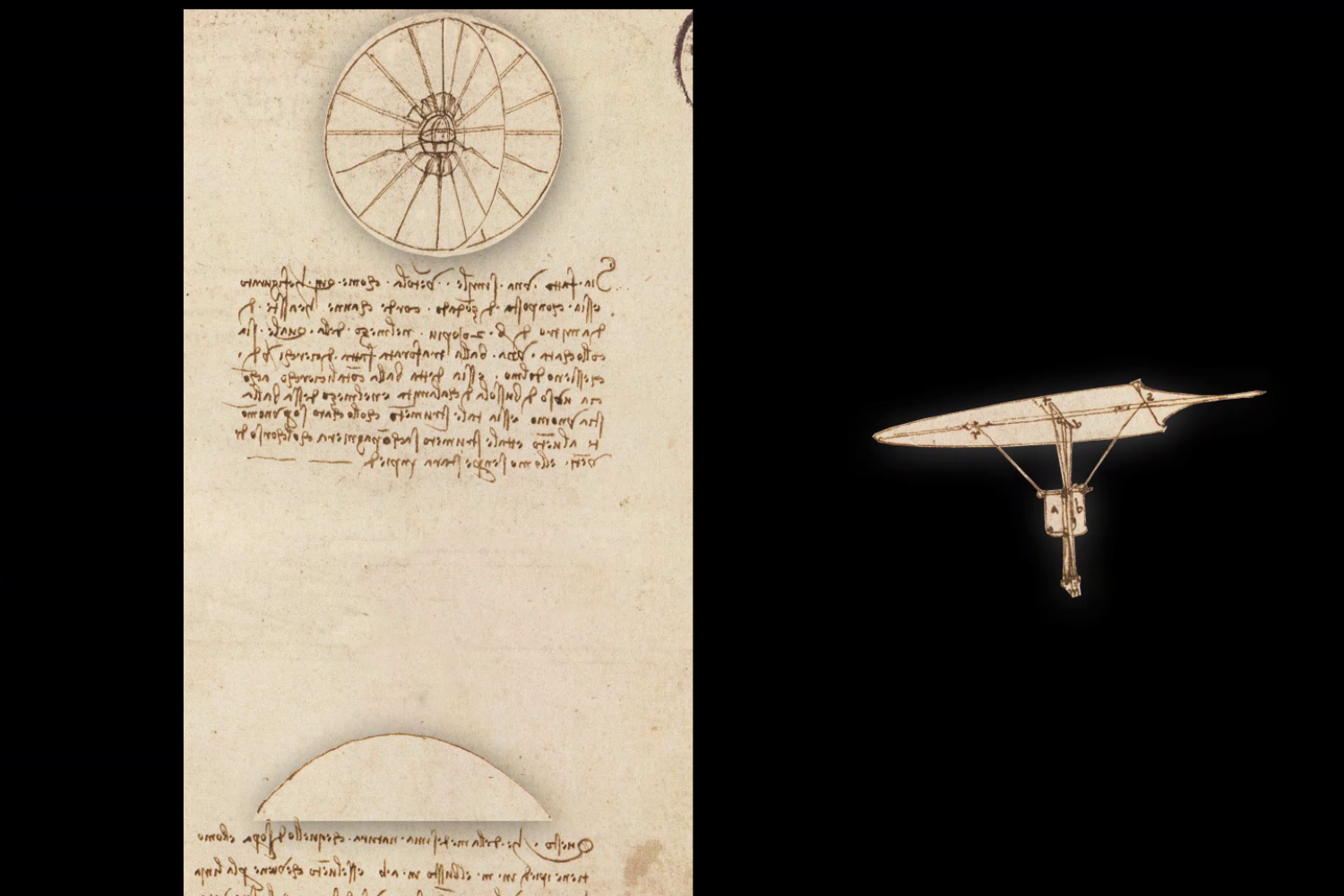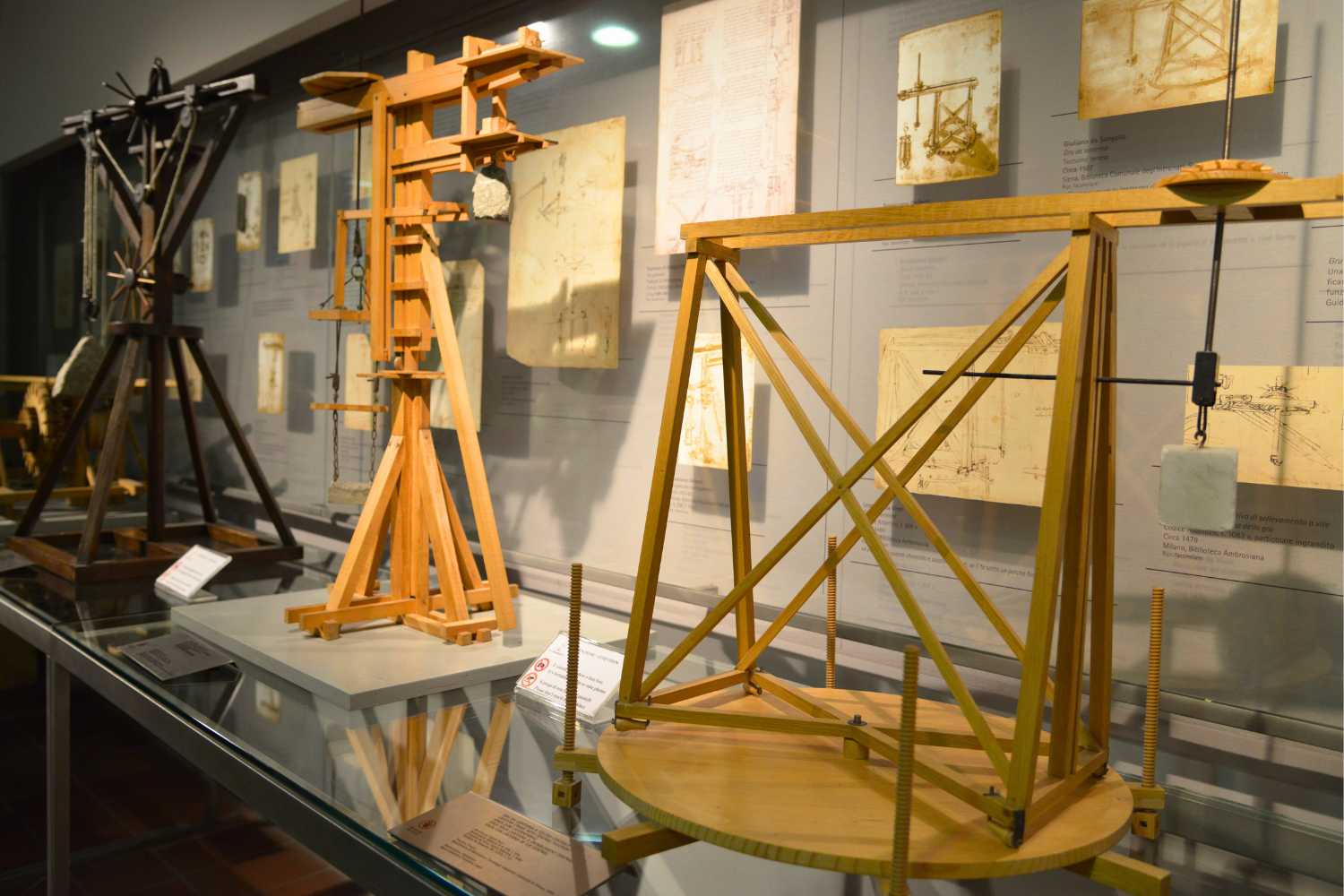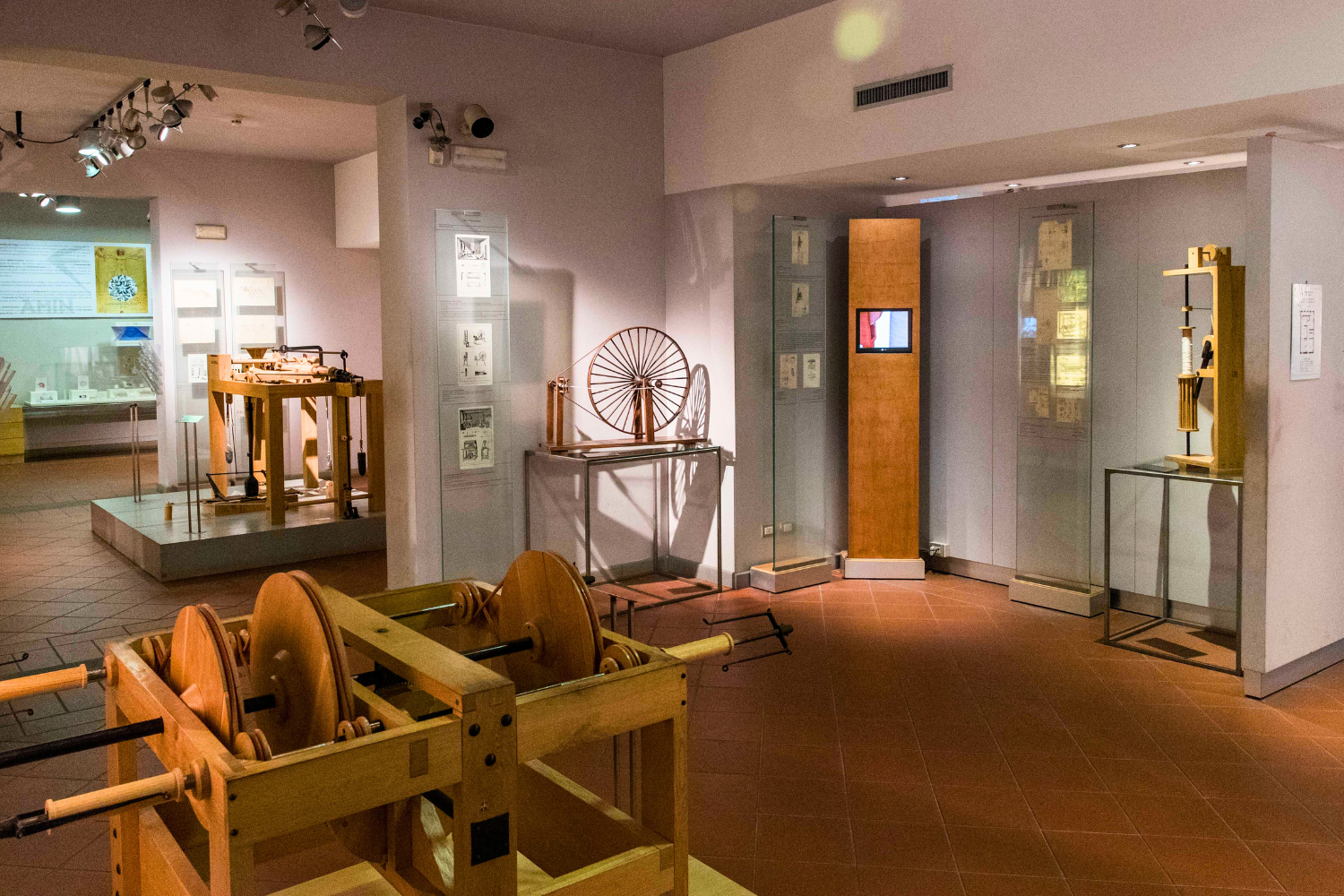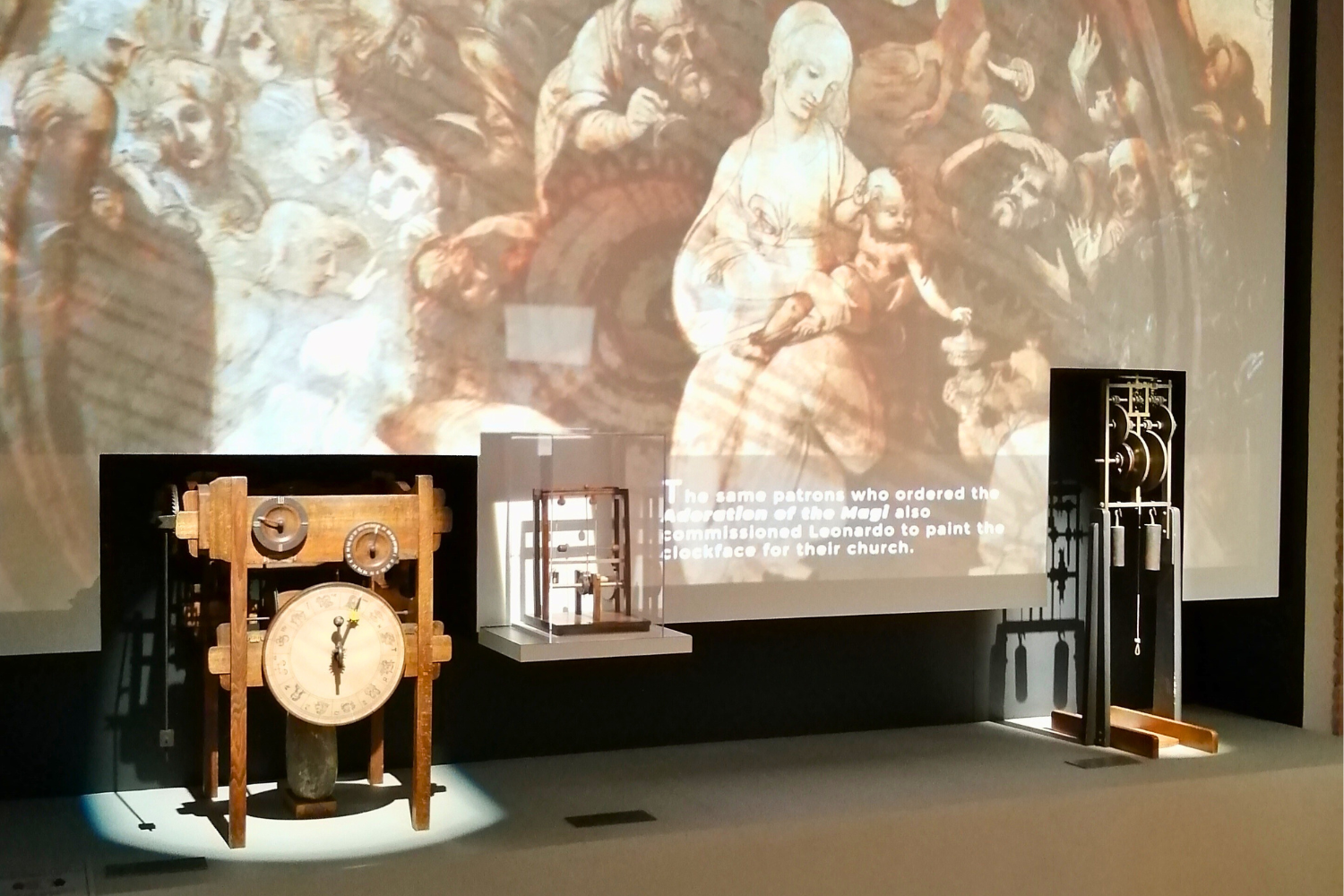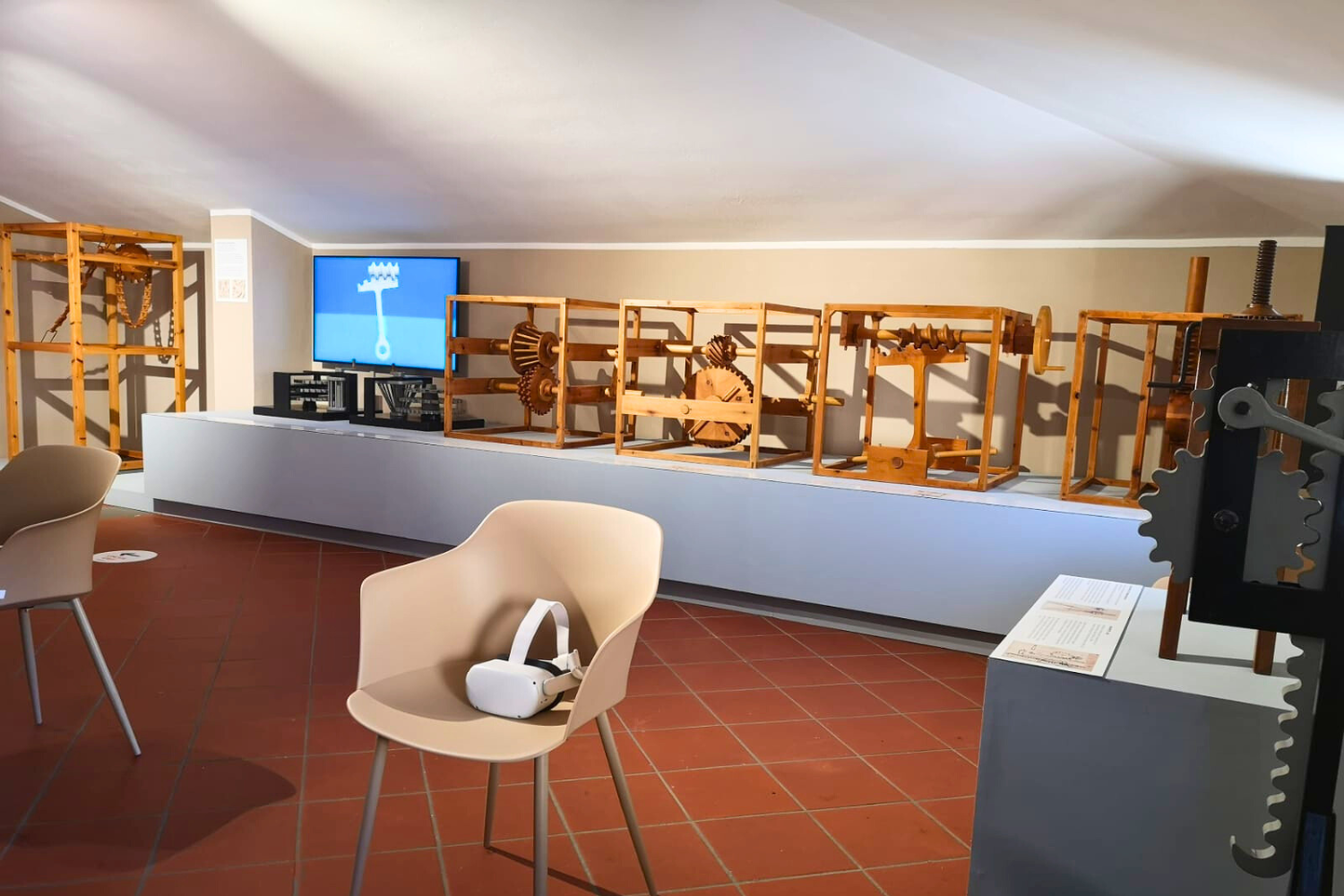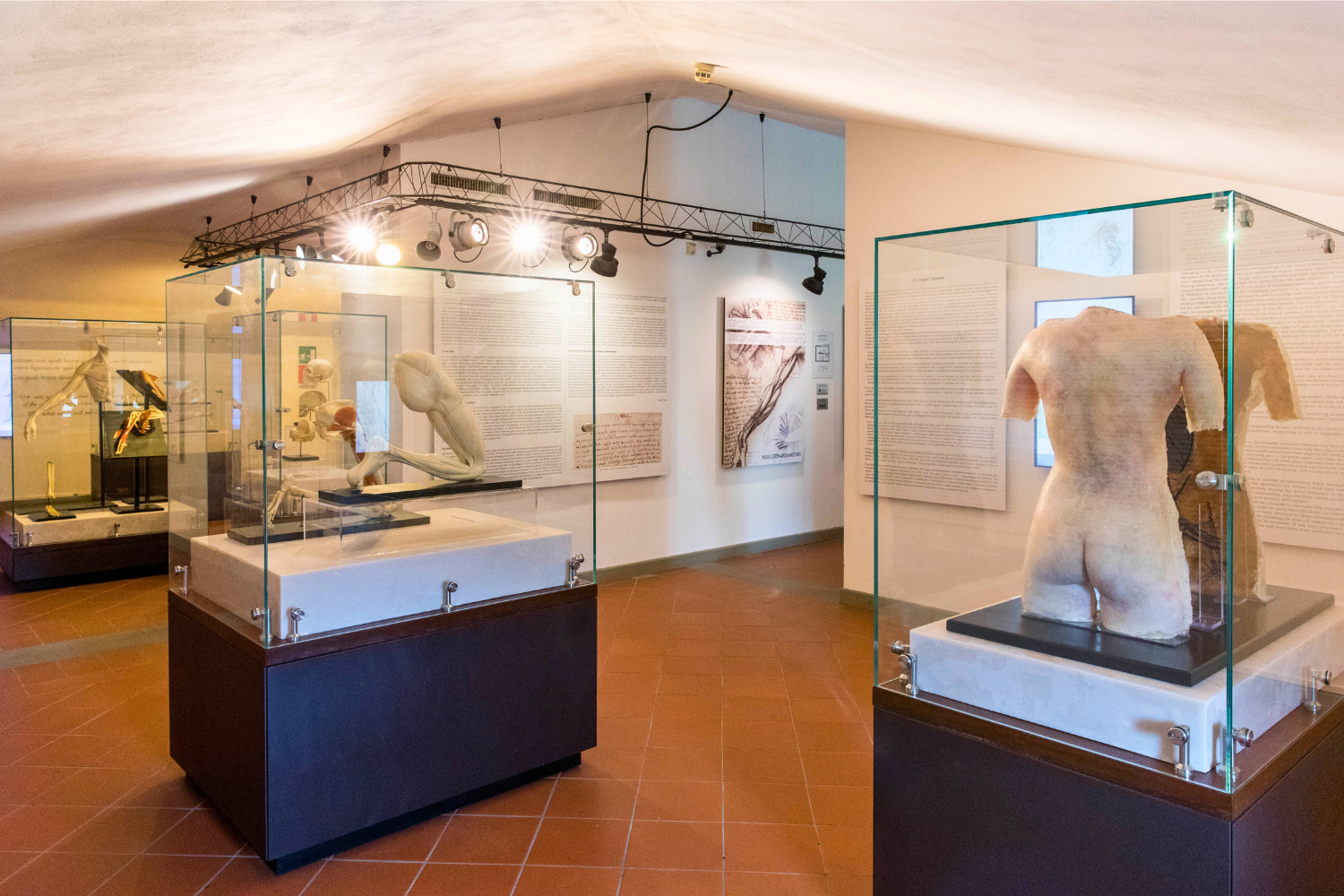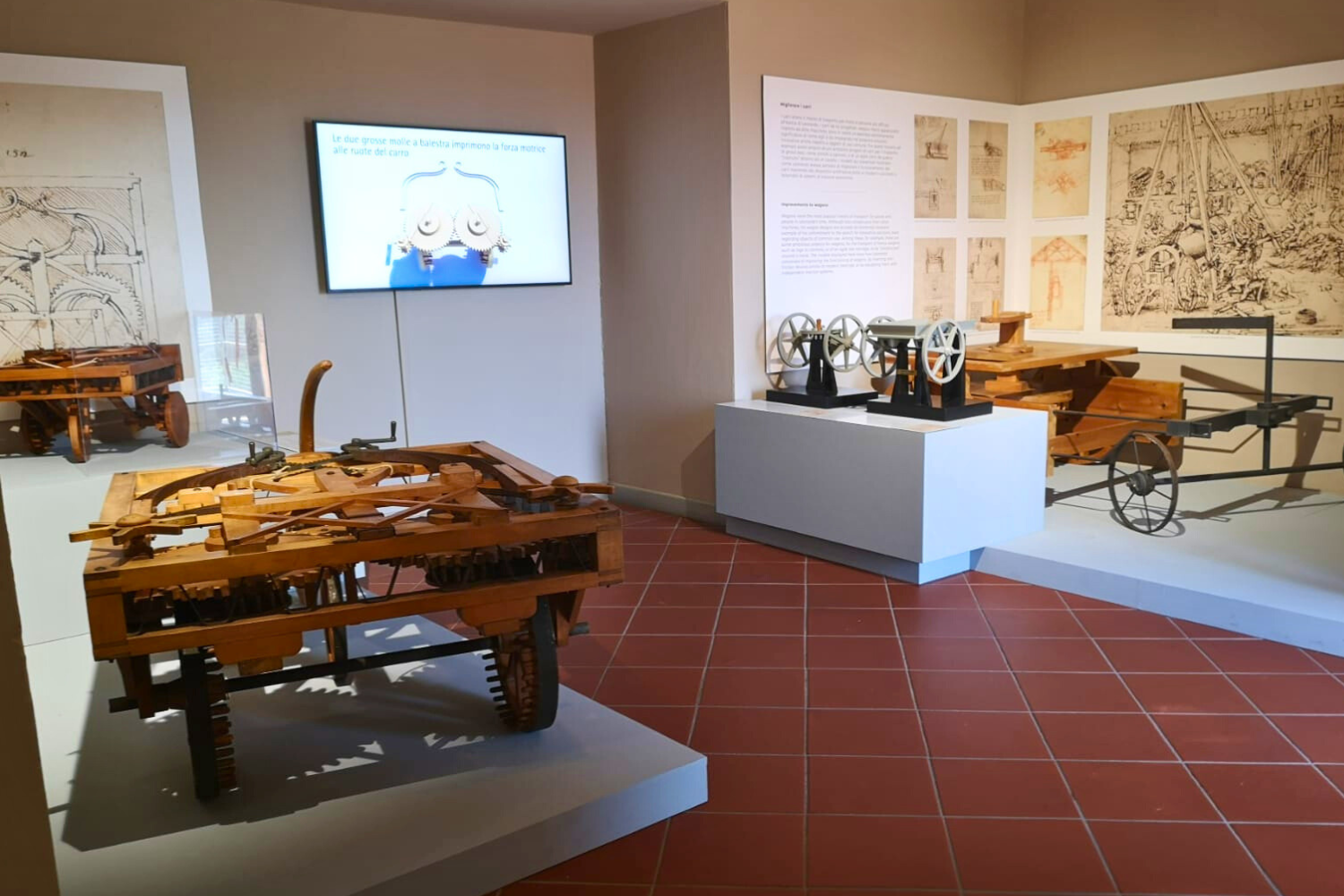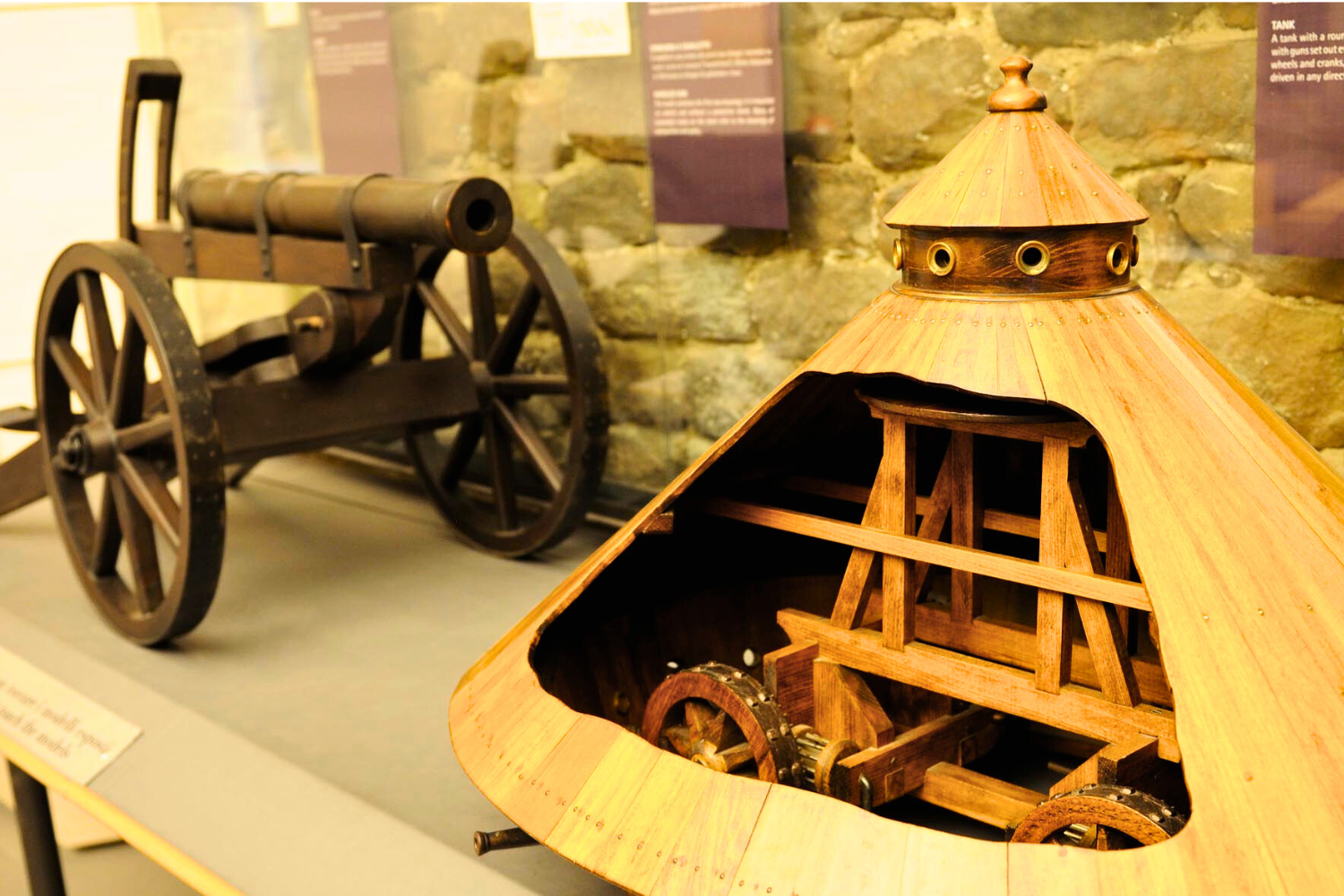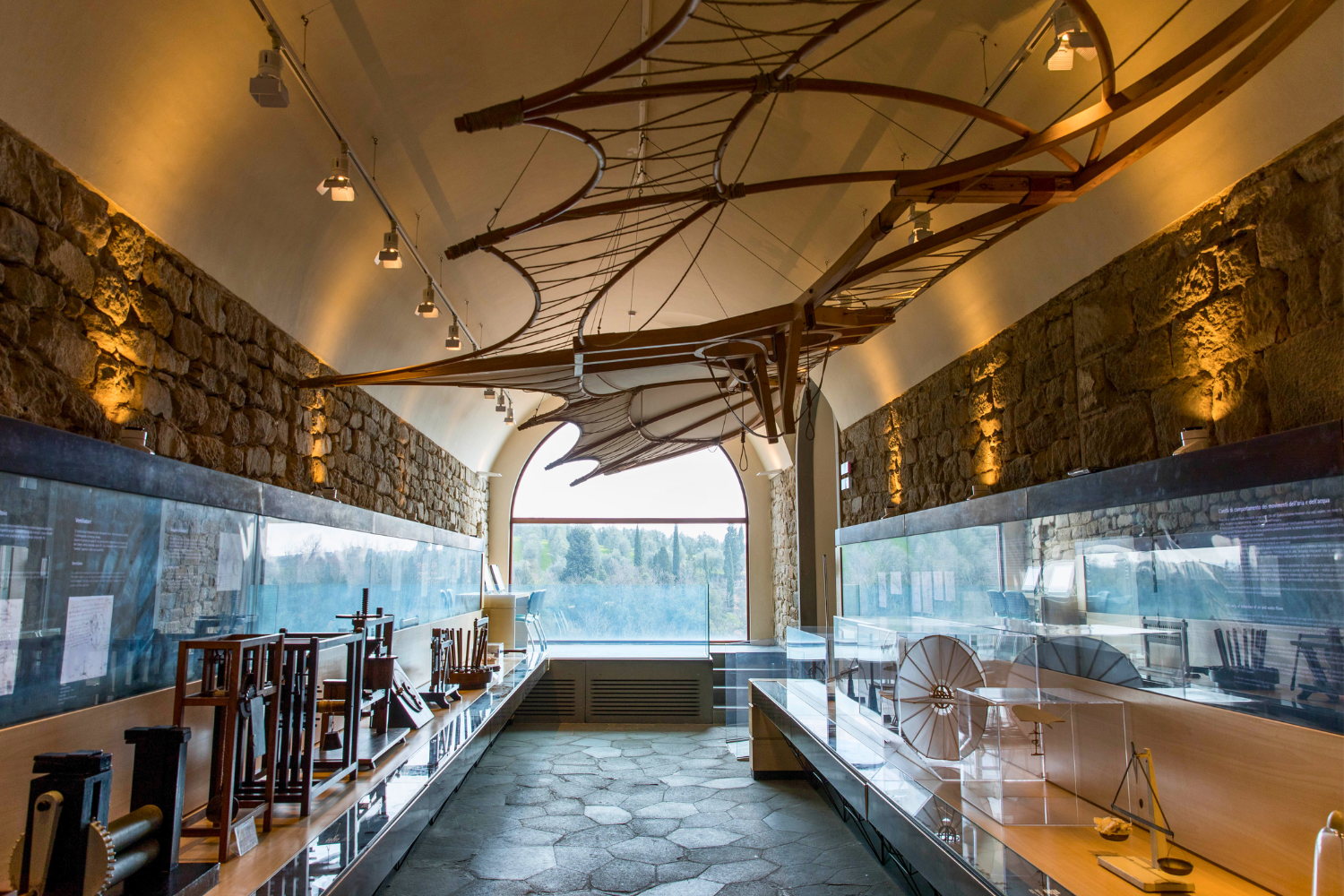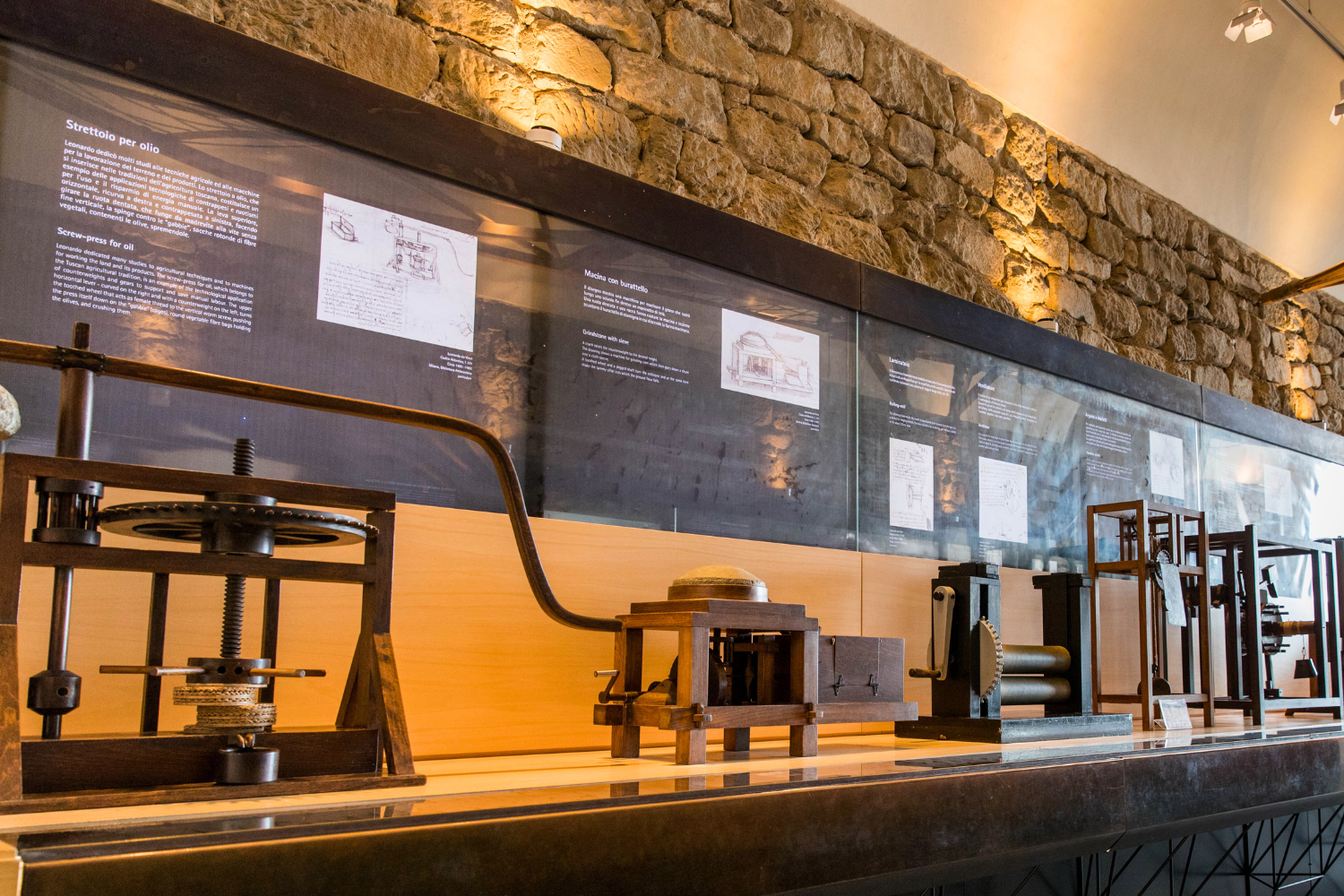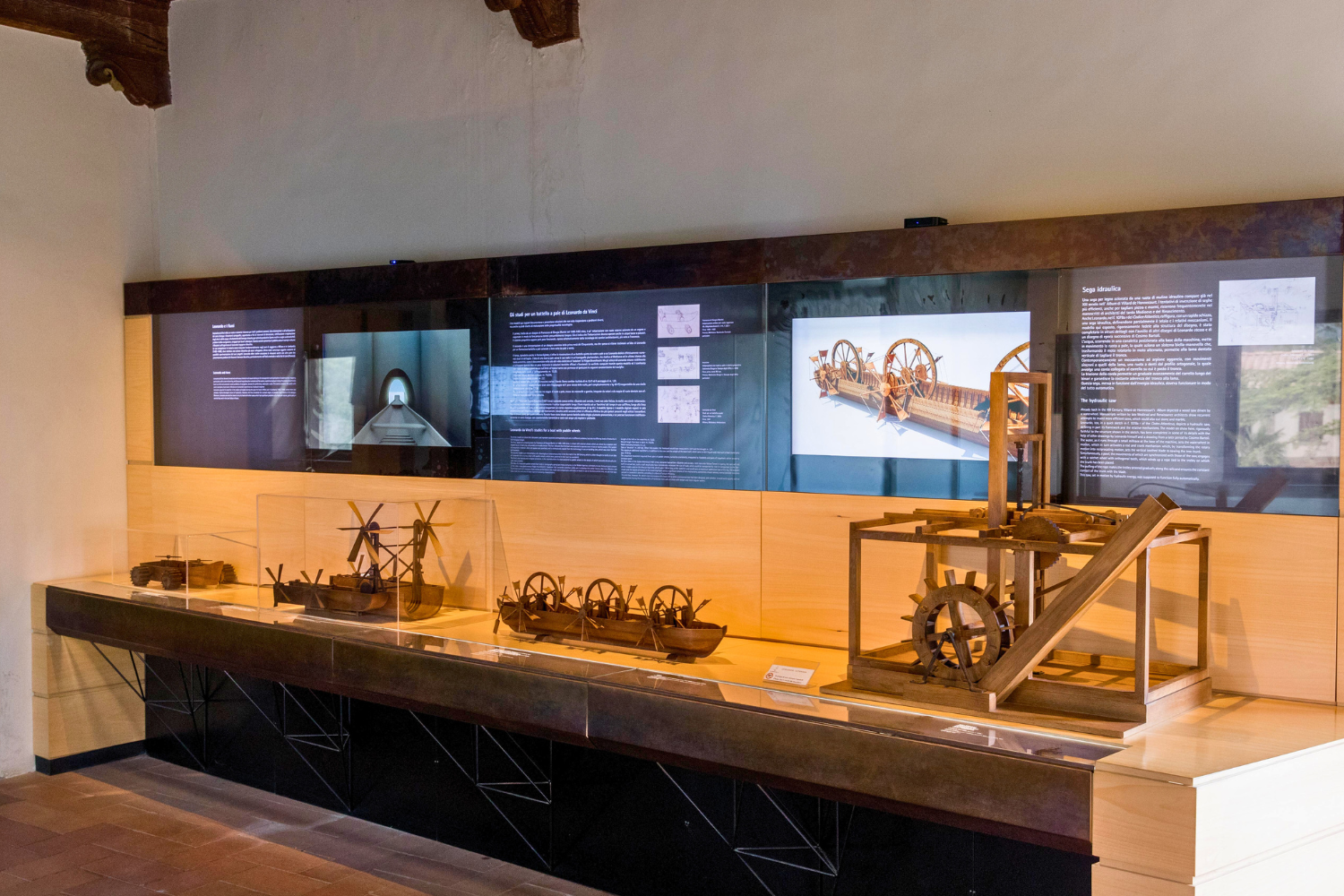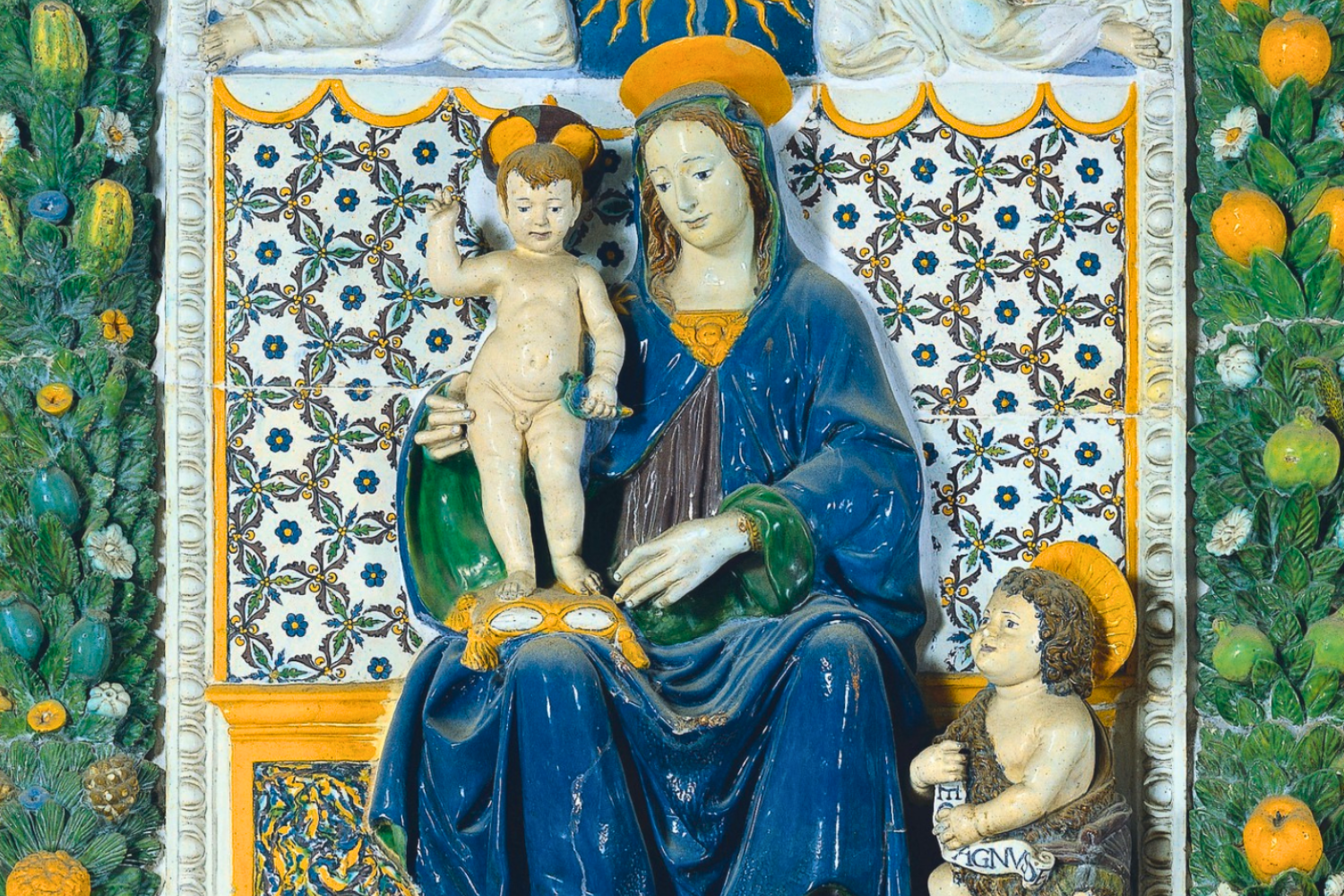The mechanics of Leonardo
The digital presentation, featuring a sequence of Leonardo’s drawings organized according to the themes explored in the museum, reflects his continuous and passionate investigation into motion and its causes. Each mechanical element in Leonardo’s projects seems to come to life thanks to the addition of sound components that translate the graphic elements into evocative audio.
Construction site machinery
Leonardo’s construction machine models include cranes and hoists designed to lift and move heavy materials. These innovative devices used pulley and gear systems to improve efficiency on building sites.
Textile machinery
Leonardo designed several models of textile machines, such as the automatic spinning wheel and the mechanical loom. These models demonstrate his efforts to automate and improve textile production, increasing both the speed and precision of the work.
Clocks
In the field of clockmaking, Leonardo created models of pendulum and water clocks. These clocks represent his studies on time mechanisms and accuracy in measurement, utilizing complex and innovative gears.
Anatomy of machines
The system of breaking down machines into individual gears for better analysis is also referred to as the "anatomy of machines," due to its close analogy with the method Leonardo adopted for studying the human body.
Anatomy
The human anatomy models include detailed anatomical studies of muscles, bones, and organs. Leonardo’s dissections and drawings were fundamental to the understanding of the human body and are accurately represented in the museum’s models.
Carriages
Leonardo demonstrated remarkable skill in devising innovative solutions even for everyday objects, such as carts, which in his time were the most common means of transporting goods and people.
Machines for transforming the territory
Reinforcing a riverbank to protect a settlement from flooding, reshaping the profile of a hill to facilitate the expansion of a town, or constructing a canal to enable trade and irrigate farmland—these are all examples of how humans have long sought to reshape the landscape.
War machines
In his notebooks, alongside drawings of powerful projectile weapons and systems designed to overcome obstacles during sieges, we find the development of new procedures for casting modular artillery, studies of multi-barrel guns, aiming and recoil-reduction systems, and even an innovative design for a steam-powered cannon.
Bridges
Given the crucial importance of waterways as communication routes in times of peace and obstacles to overcome in times of war, Leonardo devoted himself to designing structures capable of regulating or crossing them.
Flight studies
"Those who have tried flight will walk looking at the sky, because there they have been and there they want to return." These words perfectly capture Leonardo’s fascination with flight, a dream that never left him throughout his life.
Mechanisms and instruments
Leonardo devoted much of his thinking to mechanics and the study of the fundamental components of machines, analyzing their principles and operating criteria.
Leonardo in Vinci
Leonardo’s interest in hydraulics most likely began when he was very young, in Vinci, where numerous mills harnessed the water power of the streams that still flow down from the Montalbano towards the valley today.
Ebbe nome Lionardo
The early biographical events of Leonardo, from his birth in Vinci to his training in Renaissance Florence and the artist’s unbreakable bond with his homeland, are narrated within an innovative immersive room.
Podestà’s Hall
Podestà’s Hall is the most prestigious room in the Castle of Vinci, which, after coming under Florentine rule, became the residence of the podestà in 1372. In this hall, the podestà—officials sent from Florence to administer justice in the countryside—left traces of their presence through paintings and sculptures bearing their names, family crests, and the year of their appointment.
